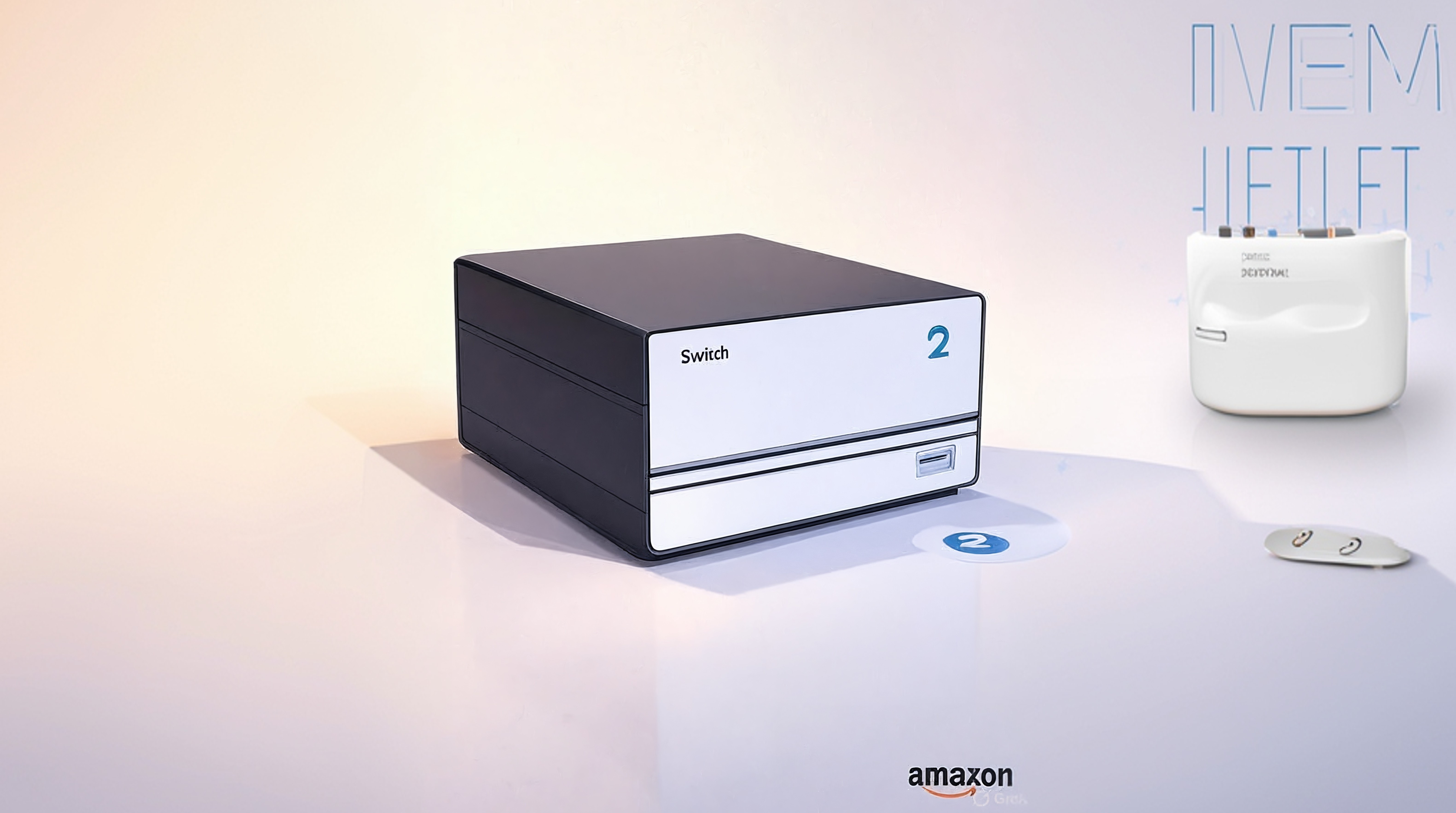
AWS M8i Boosts Cloud Power, Microsoft Leads IoT
Cloud platforms continue to evolve, pushing boundaries in performance and integration. Recent launches from AWS and Microsoft highlight how these giants address growing demands for efficient computing and smart industrial solutions. The introduction of AWS's EC2 M8i and M8i-flex instances, alongside Microsoft's recognition in industrial IoT, signals broader shifts toward optimized resources and intelligent systems.
Advancements in AWS EC2 Instances
AWS has rolled out the M8i and M8i-flex instances, powered by custom Intel Xeon 6 processors that maintain a sustained all-core turbo frequency of 3.9 GHz. This setup delivers substantial upgrades over the previous M7i generation, including 15% better price performance, 20% higher overall performance, and 2.5 times more memory bandwidth.
These improvements matter for users handling diverse workloads. Web servers, virtual desktops, batch processing, microservices, databases, and enterprise applications all benefit from the balanced compute, memory, and network capabilities. For instance, NGINX web applications run up to 60% faster, PostgreSQL databases see 30% gains, and AI deep learning recommendation models accelerate by 40%.
The sixth-generation AWS Nitro Cards further enhance this by doubling network and Amazon Elastic Block Storage bandwidth. Users can flexibly allocate bandwidth between network and storage, optimizing for tasks like database operations or logging. This adaptability helps organizations manage costs while scaling efficiently, especially in environments where workloads fluctuate.
Implications for Cloud Users
For businesses migrating to the cloud or optimizing existing setups, these instances offer a compelling case. The emphasis on price performance addresses a key pain point: balancing cost with capability. In sectors like e-commerce or fintech, where rapid data processing is crucial, the higher memory throughput reduces bottlenecks in memory-intensive tasks such as AI inference.
Experts point to the partnership with Intel as a strategic move, keeping AWS competitive against alternatives like AMD EPYC-based instances or ARM-powered Graviton options. This diversity in processor choices allows users to select based on specific needs, fostering a more inclusive cloud ecosystem. However, it also raises questions about energy efficiency and environmental impact, as higher performance often correlates with increased power consumption. Platforms must consider how these advancements align with sustainability goals, ensuring that tech progress doesn't exacerbate climate concerns.
Microsoft's Leadership in Industrial IoT
Microsoft's designation as a Leader in the 2025 Gartner Magic Quadrant for Global Industrial IoT Platforms underscores Azure's role in delivering secure, scalable solutions. Azure integrates AI, analytics, and edge computing, enabling industrial organizations to build intelligent systems that handle everything from predictive maintenance to digital twins.
This recognition reflects investments in hybrid cloud and edge capabilities, allowing data processing at the source for low-latency applications. In manufacturing, energy, and transportation, these tools help reduce downtime and optimize operations. Azure IoT Hub, Digital Twins, and Sphere provide a robust ecosystem for secure deployments, addressing the unique challenges of industrial environments where data sensitivity and reliability are paramount.
Broader Industry Context
The industrial IoT market is projected to grow at a CAGR of 20-25% through 2028, driven by digital transformation. Microsoft's strengths in AI integration set it apart from competitors like Siemens MindSphere, PTC ThingWorx, and AWS IoT. By embedding machine learning into IoT platforms, Azure facilitates proactive strategies, such as predicting equipment failures before they occur, which can save industries billions in lost productivity.
Yet, this leadership brings responsibilities. As platforms like Azure collect vast amounts of operational data, concerns around privacy and security intensify. Industrial users, often dealing with critical infrastructure, need assurances that these systems protect against cyber threats. Microsoft's approach, emphasizing secure-by-design principles, helps build trust, but ongoing vigilance is essential to prevent vulnerabilities that could disrupt essential services.
Intersections of Cloud Compute and IoT
The developments from AWS and Microsoft intersect in meaningful ways, particularly in AI and machine learning workloads. The M8i instances' enhanced performance supports the computational demands of IoT data processing, where real-time analytics require robust infrastructure. For example, industrial firms using Azure for IoT could leverage AWS's high-memory instances for hybrid setups, though platform loyalty often influences choices.
This convergence highlights a trend toward integrated ecosystems. As AI becomes central to industrial applications, the need for general-purpose instances that handle both compute and memory efficiently grows. Users benefit from platforms that offer seamless interoperability, but silos between providers can create friction. Encouraging open standards could enhance collaboration, ultimately benefiting end-users by reducing integration costs and improving innovation speed.
Expert analysis suggests that flexible resource allocation, as seen in M8i-flex, will become standard, allowing smaller enterprises to compete with larger ones by optimizing cloud spend. In IoT, the focus on edge computing addresses latency issues, making solutions more accessible for remote or resource-constrained operations.
Future Outlook and Recommendations
Looking ahead, AWS may push further with custom processors and accelerators, potentially introducing even higher-frequency CPUs to support emerging AI demands. For Microsoft, deeper integrations with tools like Dynamics 365 could create end-to-end automation pipelines, expanding into new sectors like healthcare and logistics.
Predictions indicate accelerated adoption of AI-driven IoT, with digital twins becoming commonplace for simulating real-world scenarios. However, platforms should prioritize ethical AI practices, ensuring that advancements don't widen inequalities in access to technology. Recommendations for users include evaluating workloads against these new offerings—testing M8i for general-purpose needs and exploring Azure for IoT-specific projects—to maximize efficiency.
Organizations should also consider the human element: training workers to leverage these tools can amplify benefits, while addressing job displacement through reskilling programs. Balancing technological gains with societal impacts will define the next phase of cloud and IoT evolution.
Key Takeaways
The M8i instances from AWS represent a leap in cloud performance, offering users cost-effective options for diverse workloads. Microsoft's IoT leadership via Azure positions it as a go-to for industrial innovation, emphasizing security and scalability. Together, these advancements drive efficiency but underscore the need for sustainable, inclusive tech strategies. As the landscape evolves, focusing on user needs and broader implications will ensure lasting progress.
Comments
Read more

Wolverine PS5 Debut and Alan Wake 2 Free: Gaming Shifts
Explore Marvel's Wolverine PS5 release and Alan Wake 2 on PS Plus, with insights on tech trends, narrative gaming, and platform strategies.

Switch 2 Lands on Amazon Amid Prime Deals Surge
Explore how Nintendo's Switch 2 hits Amazon shelves, boosting accessibility, while Prime memberships unlock exclusive sales and perks in evolving consumer tech.

2025 Tech Trends: Earbuds, Laptops, and Smart Storage
Explore Apple's AirPods Pro 3, top laptops like MacBook Air M4, and Ubiquiti's sleek NAS devices, with insights on AI integration and user impacts.